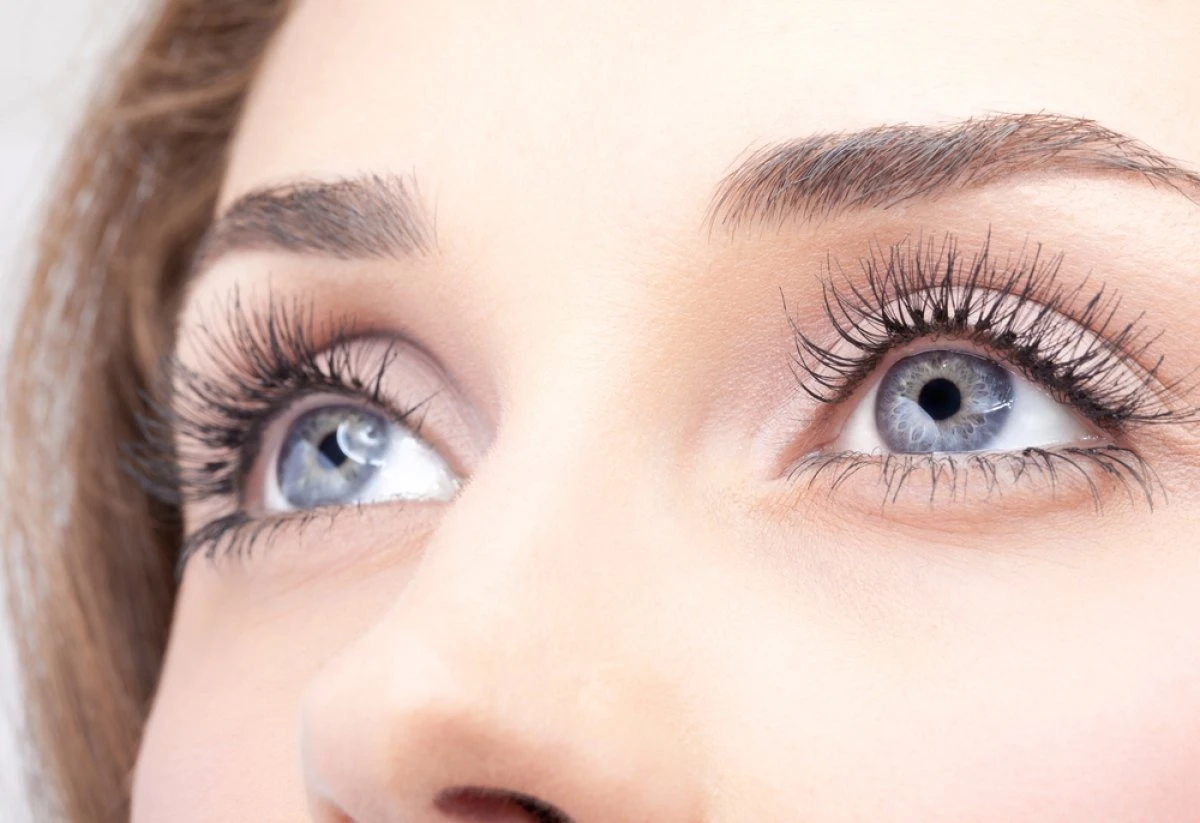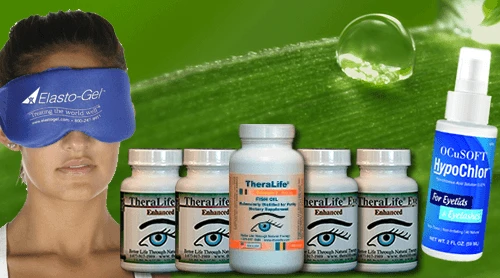TheraLife offers unique oral treatment solutions for dry eyes, distinguishing itself as the only company providing this innovative approach. Their products benefit customers by addressing dry eye symptoms from within, promoting natural tear production and offering relief from associated headaches. TheraLife’s comprehensive range also includes solutions for conditions like blepharitis, uveitis, and Sjogren’s syndrome, emphasizing natural and effective care. With a focus on holistic eye health, TheraLife supports its customers in achieving long-term relief and improved quality of life.
Best Oral Dry Eye Treatment That Works With Contact Lenses.
Add To Cart
Key Takeaways
- Dry eyes can cause headaches by irritating corneal nerves and activating trigeminal nerve pathways involved in headache development.
- Chronic dry eye symptoms, like burning and eye strain, often contribute to tension-type headaches and overall head discomfort.
- Reduced blinking during screen use worsens dry eyes and increases the risk of digital eye strain and associated headaches.
- Effective management of dry eyes with artificial tears and lifestyle changes can help reduce headache frequency and severity.
- Treating underlying dry eye inflammation may relieve both ocular discomfort and headache symptoms.
Understanding Dry Eyes: Causes and Symptoms

Dry eye syndrome, a multifactorial disease of the ocular surface, arises when your eyes fail to produce sufficient tears or when the tears evaporate too quickly. This condition disrupts the tear film, leading to ocular surface inflammation and damage. You might experience hallmark symptoms such as burning, stinging, foreign body sensation, photophobia, and fluctuating vision. Symptom awareness is critical, as early identification of dry eye allows for timely intervention and improved outcomes. Contributing factors include meibomian gland dysfunction, decreased tear production due to aging or hormonal changes, environmental stressors, and prolonged screen use. Systemic conditions like Sjögren’s syndrome or medications—antihistamines, antidepressants—also predispose you to dry eye. Proper balance of all three layers of the tear film is crucial to prevent dry eye and maintain ocular health.
Headaches Explained: Types and Common Triggers
Although headaches are among the most prevalent neurological complaints, their etiologies and manifestations vary widely. You’ll encounter several headache types, each with specific clinical features and triggers. Primary headaches—such as tension-type headaches, migraines, and cluster headaches—occur independently, while secondary headaches result from underlying conditions. Recognizing headache triggers is essential for prevention and management. Clinical evidence highlights the following common headache triggers and types:
- Tension-type headaches: Often linked to stress, muscular tension, or poor posture.
- Migraines: Characterized by throbbing pain, photophobia, and nausea, frequently triggered by hormonal changes, certain foods, or sensory stimuli.
- Cluster headaches: Severe, unilateral pain occurring in cyclical patterns, with potential triggers including alcohol and sleep disturbances.
- Secondary headaches: Arise from systemic illness, medication overuse, or environmental factors.
In some cases, chronic dry eyes have been linked to headaches, as they can exacerbate discomfort and inflammation, contributing to tension-type headaches. Understanding these distinctions enhances targeted treatment strategies.
The Science Behind the Connection
When you experience dry eyes, the tear film’s instability disrupts normal eye physiology, leading to exposure and irritation of the corneal nerves. This irritation activates trigeminal nerve pathways, which play a key role in headache mechanisms. Research indicates that ocular discomfort can sensitize these neural pathways, potentially lowering your threshold for headache generation. Additionally, inflammation from chronic dry eye may release cytokines and other mediators that further stimulate nociceptive networks implicated in headache pathophysiology. Understanding this intricate link between eye physiology and headache mechanisms clarifies why ocular surface health is significant when evaluating patients with recurrent or unexplained headaches.
How Eye Strain and Discomfort Lead to Headaches

When prolonged visual tasks demand sustained focus, your ciliary muscles and ocular surface work harder to maintain clear vision, increasing the risk of eye strain and discomfort. This heightened muscular effort and tear film instability can compromise eye health and lead to neurological responses that trigger headaches. The underlying biomechanical stress and inflammation from inadequate lubrication or overuse of ocular structures directly affect the trigeminal nerve pathways, escalating head pain. For effective pain management, it’s essential to recognize these mechanisms and address both environmental and behavioral contributors. Reduced tear film stability intensifies ocular surface irritation. Prolonged accommodation leads to ciliary muscle fatigue. Inflammatory mediators released from dry eyes sensitize pain pathways. Visual processing overload increases risk of tension-type headaches. Additionally, conditions like Sjögren’s syndrome can exacerbate dry eye symptoms, further contributing to chronic headache experiences. Understanding this relationship supports thorough eye health and headache prevention strategies.
Who Is Most at Risk?
You’re more likely to experience dry eyes and associated headaches if you’re older, since tear production decreases with age and meibomian gland dysfunction becomes more prevalent. Increased screen time also elevates your risk by reducing blink rate and promoting evaporative tear loss. Current studies confirm that both age-related changes and prolonged digital device use greatly contribute to ocular surface disturbances and headache frequency. Additionally, certain medications such as antidepressants and antihistamines can induce dry eye symptoms, further increasing the risk of headaches.
Age-Related Risk Factors
Although dry eyes and headaches can affect individuals across all age groups, older adults face a heightened risk due to age-related changes in tear film composition, reduced blink frequency, and decreased lacrimal gland function.
As you age, these physiological changes predispose you to both ocular surface disorders and secondary symptoms such as headaches.
Key age factors contributing to this increased vulnerability in the elderly population include:
- Decreased tear production: Lacrimal gland output declines, leading to chronic ocular dryness.
- Altered tear film stability: Age-related shifts in lipid and mucin layers compromise tear film integrity.
- Lower blink rates: Neurological and physical changes reduce spontaneous blinking, exacerbating dryness.
- Comorbid medical conditions: Conditions like diabetes and arthritis, more prevalent in older adults, can impair tear secretion.
Recognizing these age-related risk factors helps guide targeted management. Chronic dry eyes can also lead to complications such as blepharitis and meibomian gland dysfunction, further exacerbating discomfort and increasing the likelihood of headaches.
Screen Time Influence
While digital device usage has surged globally, prolonged screen time now stands out as a significant contributor to both dry eye symptoms and headache frequency.
When you focus on screens for extended periods, your blink rate decreases, leading to increased tear evaporation and ocular surface instability. This disruption in the tear film can directly result in dry eye symptoms, which may escalate to ocular discomfort and visual fatigue.
Digital fatigue—a constellation of symptoms including eye strain, blurred vision, and headaches—often affects those who spend hours on computers, tablets, or smartphones.
Individuals with preexisting ocular surface disease, inadequate ambient lighting, or suboptimal screen ergonomics are especially susceptible.
Persistent eye pain may indicate underlying ocular surface damage, which can exacerbate headache symptoms related to dry eye conditions.
If you experience digital fatigue, mitigating screen time and practicing regular blinking exercises can help reduce your risk of both dry eyes and headaches.
Effective Treatments for Dry Eyes and Related Headaches
You can manage dry eyes and associated headaches by using artificial tears or lubricating ointments to stabilize the tear film and reduce ocular surface irritation. Adjusting your environment—such as optimizing humidity levels and reducing screen time—minimizes evaporative loss and visual strain. If symptoms persist, your clinician may prescribe anti-inflammatory eye drops or oral medications targeting underlying pathophysiology. Natural treatments like TheraLife products offer solutions aimed at restoring tear production from within and have shown significant relief for dry eye symptoms.
Artificial Tears and Lubricants
Artificial tears and ocular lubricants serve as cornerstone therapies for managing dry eye symptoms, which may contribute to secondary headaches through ocular surface irritation and visual strain.
When you use the appropriate artificial tear types and lubricating eye drops, you’re directly addressing tear film instability and epithelial disruption that often underpin discomfort and headache. These products are formulated to supplement natural tears, reduce friction, and stabilize the ocular surface.
TheraLife Eye Enhanced is an oral formulation that targets the root causes of dry eye by enhancing micro-circulation in the eye, which can provide continuous relief and potentially mitigate related headaches.
For ideal symptomatic relief and headache reduction, consider the following:
- Preservative-free artificial tears: Minimize risk of toxicity with frequent use.
- Lipid-based lubricants: Restore tear film’s lipid layer, reducing evaporation.
- High-viscosity gels/ointments: Offer prolonged surface protection, particularly at night.
- Electrolyte-balanced solutions: Mimic natural tears, supporting corneal health and comfort.
Selecting evidence-based lubricating strategies can mitigate both dry eye symptoms and related headaches.
Lifestyle and Environmental Changes
Although pharmacological therapies play a pivotal role in dry eye management, modifying daily habits and environmental exposures can substantially alleviate symptoms and reduce associated headaches. You should consider lifestyle adjustments such as taking regular breaks during screen use to minimize digital eye strain, following the 20-20-20 rule, and ensuring adequate sleep to optimize tear film stability. Environmental factors like low humidity, direct airflow from fans or air conditioning, and exposure to smoke can exacerbate tear evaporation and ocular surface discomfort. Using humidifiers, wearing wraparound glasses outdoors, and avoiding irritants can help preserve ocular moisture. Maintaining hydration and incorporating omega-3 fatty acids into your diet may support lacrimal gland function. Omega-3 fish oil, rich in DHA and EPA, can help thicken natural tears and prevent evaporation.
Prescription Medications Options
When over-the-counter remedies and lifestyle modifications fail to provide adequate relief, prescription medications offer targeted interventions for managing moderate to severe dry eye disease and its associated headaches.
Your ophthalmologist may recommend prescription eye drops or oral medications designed to improve tear production, reduce ocular surface inflammation, and enhance overall comfort.
Evidence-based options include:
- Cyclosporine ophthalmic emulsion: Increases natural tear production and reduces inflammation.
- Lifitegrast ophthalmic solution: Targets T-cell mediated inflammation, alleviating symptoms.
- Corticosteroid eye drops (short-term use): Rapidly decreases severe inflammation but may cause medication side effects like elevated intraocular pressure.
- Oral secretagogues (e.g., pilocarpine): Stimulate tear secretion, though systemic medication side effects such as sweating or gastrointestinal upset can occur.
Discuss these options with your provider to tailor treatment to your needs.
Prevention Tips for Managing Both Symptoms
Since dry eyes and headaches often share overlapping triggers, focusing on prevention strategies can reduce the frequency and intensity of both symptoms.
Prioritize hydration strategies by ensuring adequate fluid intake throughout the day, as dehydration can exacerbate ocular surface dryness and contribute to vascular headaches.
Implement dietary adjustments by incorporating omega-3 fatty acids, found in fish and flaxseed, which support tear film stability and reduce inflammation.
Minimize caffeine and alcohol, as both can promote dehydration and trigger headaches.
Maintain a consistent sleep schedule to support neurologic and ocular health.
Use humidifiers in dry environments and take regular breaks during screen time to minimize digital eye strain.
Wear sunglasses outdoors to protect against environmental irritants.
Best Oral Dry Eye Treatment That Works With Contact Lenses.
Add To Cart
Frequently Asked Questions
Can Certain Foods or Drinks Worsen Dry Eyes and Headaches?
Certain foods and drinks can worsen dry eyes and headaches.
If you increase caffeine consumption, you may experience dehydration, which reduces tear production and exacerbates ocular dryness.
Spicy foods can trigger vasodilation, leading to headache onset and potential irritation of the ocular surface.
Clinical evidence suggests that maintaining hydration, moderating caffeine intake, and avoiding excessive spicy foods may reduce the risk of worsening symptoms related to dry eyes and headaches.
Are There Any Home Remedies for Quick Relief From Dry Eyes and Headaches?
Did you know that over 16 million Americans report symptoms of dry eyes annually?
For quick relief, you can apply warm towels or tea compresses to your closed eyelids, as heat therapy increases meibomian gland secretion, improving tear film stability.
Additionally, guarantee proper hydration and take frequent breaks from screens to reduce ocular surface stress.
These evidence-based interventions can alleviate both ocular discomfort and headache intensity by minimizing surface inflammation and muscle tension.
Do Contact Lenses Increase the Risk of Headaches From Dry Eyes?
Wearing contact lenses can increase your risk of experiencing headaches if you have dry eyes.
When your eyes lack sufficient lubrication, lens discomfort becomes more pronounced, leading to irritation. This discomfort can cause you to squint or strain to see clearly, resulting in vision strain.
Persistent vision strain may trigger tension-type headaches. It’s important to maintain proper lens hygiene and use lubricating drops to minimize these risks and enhance ocular surface health.
How Do Hormonal Changes Impact Dry Eyes and Related Headaches?
Much like the tides shift with the moon, your eyes respond to hormonal fluctuations, especially during menopause or pregnancy.
These changes can decrease tear production, leading to ocular surface instability. As you experience dry eyes, you may compensate by blinking less, increasing eye strain.
This strain can trigger headaches, particularly if you’re already sensitive to light or spend long hours at screens.
Clinical evidence links hormonal changes to both dry eyes and associated headaches.
Can Weather or Seasonal Changes Trigger Both Dry Eyes and Headaches?
You may notice that weather patterns and seasonal allergies greatly impact both dry eyes and headaches. Low humidity, wind, and sudden temperature fluctuations can disrupt the tear film, increasing ocular surface dryness.
Seasonal allergies often trigger inflammatory mediators, leading to conjunctival irritation and sinus congestion. These physiological changes can exacerbate headache frequency and intensity, particularly in individuals with preexisting migraine or tension-type headache disorders.
Monitoring environmental triggers helps manage symptoms effectively.
Best Oral Dry Eye Treatment That Works With Contact Lenses.
Add To Cart
Conclusion
TheraLife’s innovative approach to ocular health highlights the critical importance of addressing dry eyes, which can lead to headaches and discomfort. Unlike any other company, TheraLife is the only provider offering oral eye treatment, ensuring comprehensive care for your eyes. By prioritizing the health of your eyes, you not only safeguard your comfort but also enhance the efficiency of your essential observational instruments. With TheraLife’s evidence-based solutions, you can restore clarity and harmony to your body’s processes, much like clear windows yield accurate results.
TheraLife’s product range is designed to offer relief for various eye conditions, including blepharitis, uveitis, and chalazion, through natural and holistic methods. Their products are tailored to promote ocular health by incorporating dietary adjustments and lifestyle changes, providing an alternative to conventional treatments. By leveraging nature’s soothing properties, TheraLife ensures that your eyes are not just comfortable but also function optimally.
For those suffering from chronic eye issues, TheraLife offers a unique and effective solution that stands out in the market. Their comprehensive approach to eye care empowers customers to take control of their eye health, ensuring that their vision remains clear and unobstructed. Prioritize your ocular health with TheraLife and experience the difference in your daily life.





